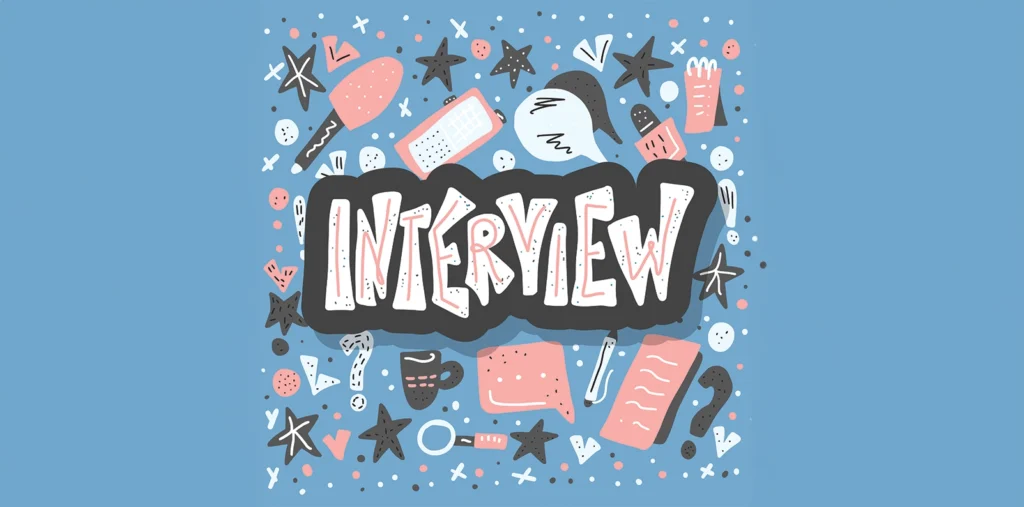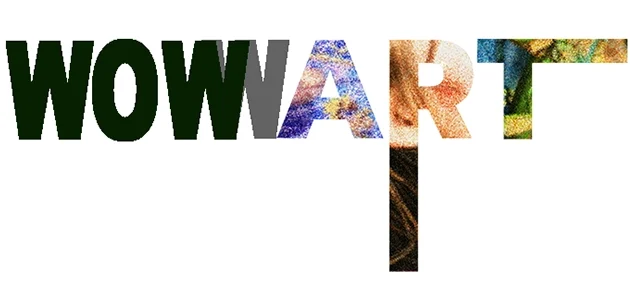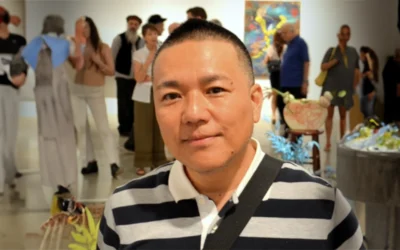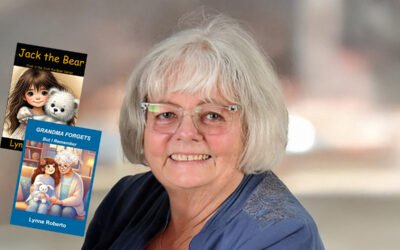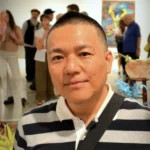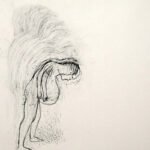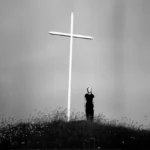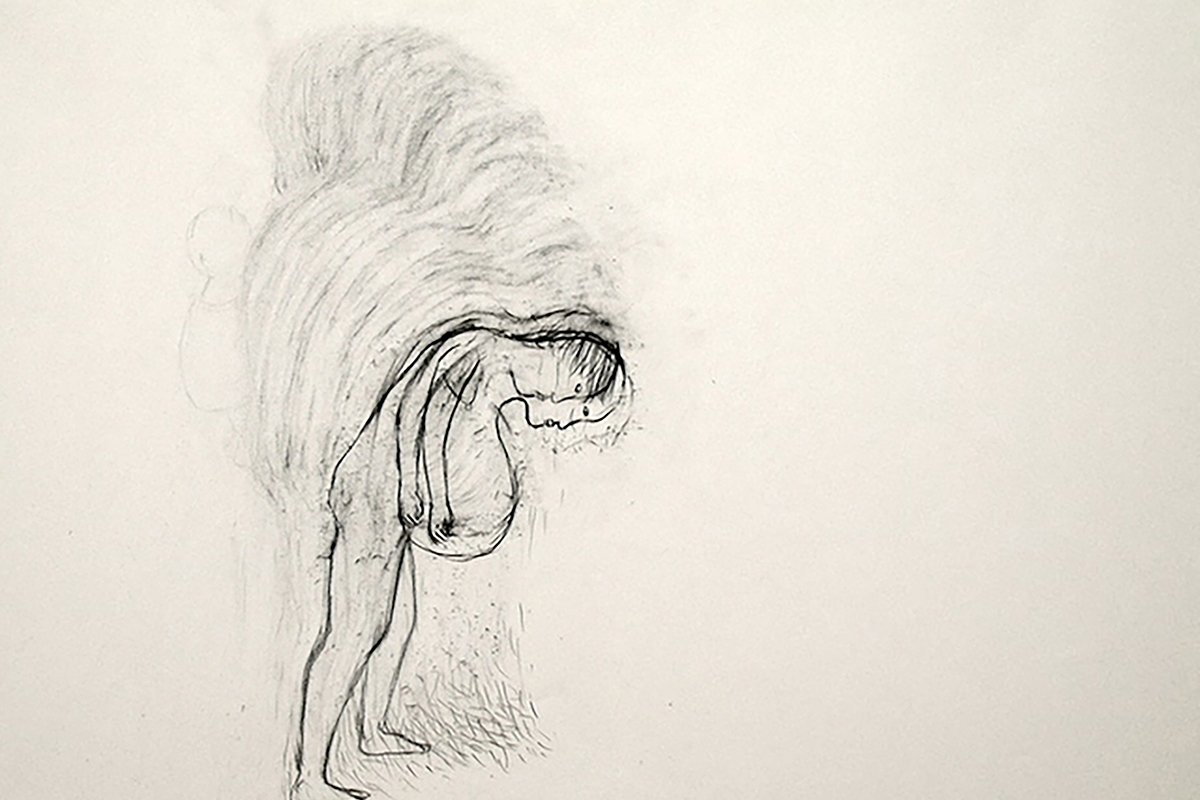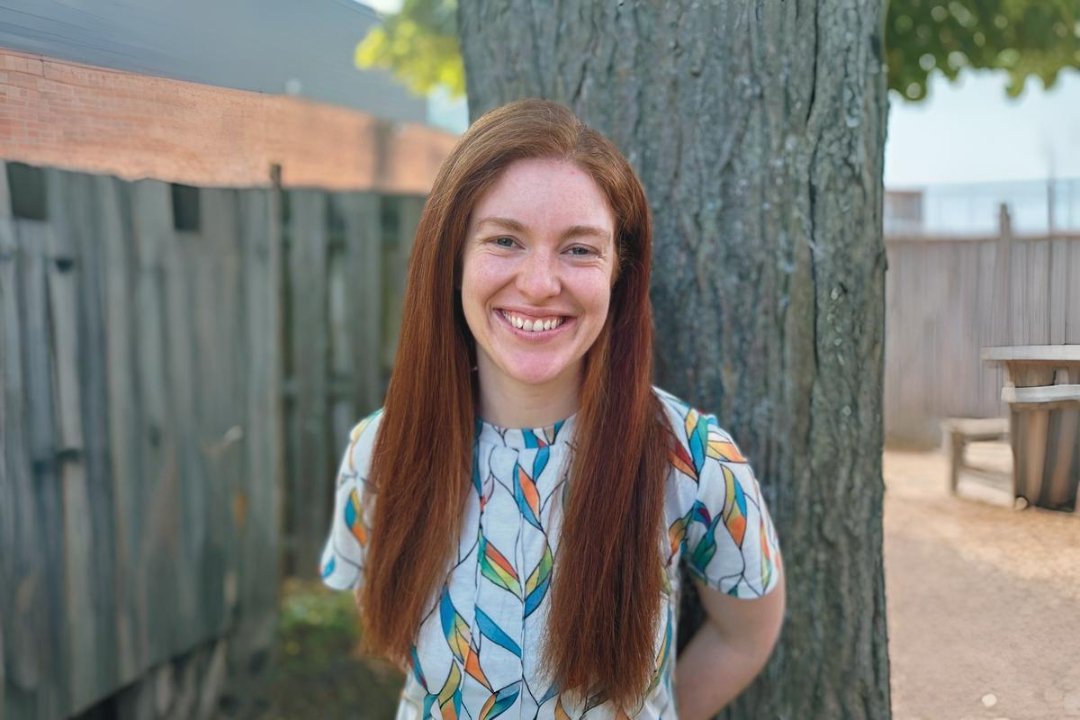Niki Singleton Weaves Myth, Identity, and Emotion Into Provocative Narratives
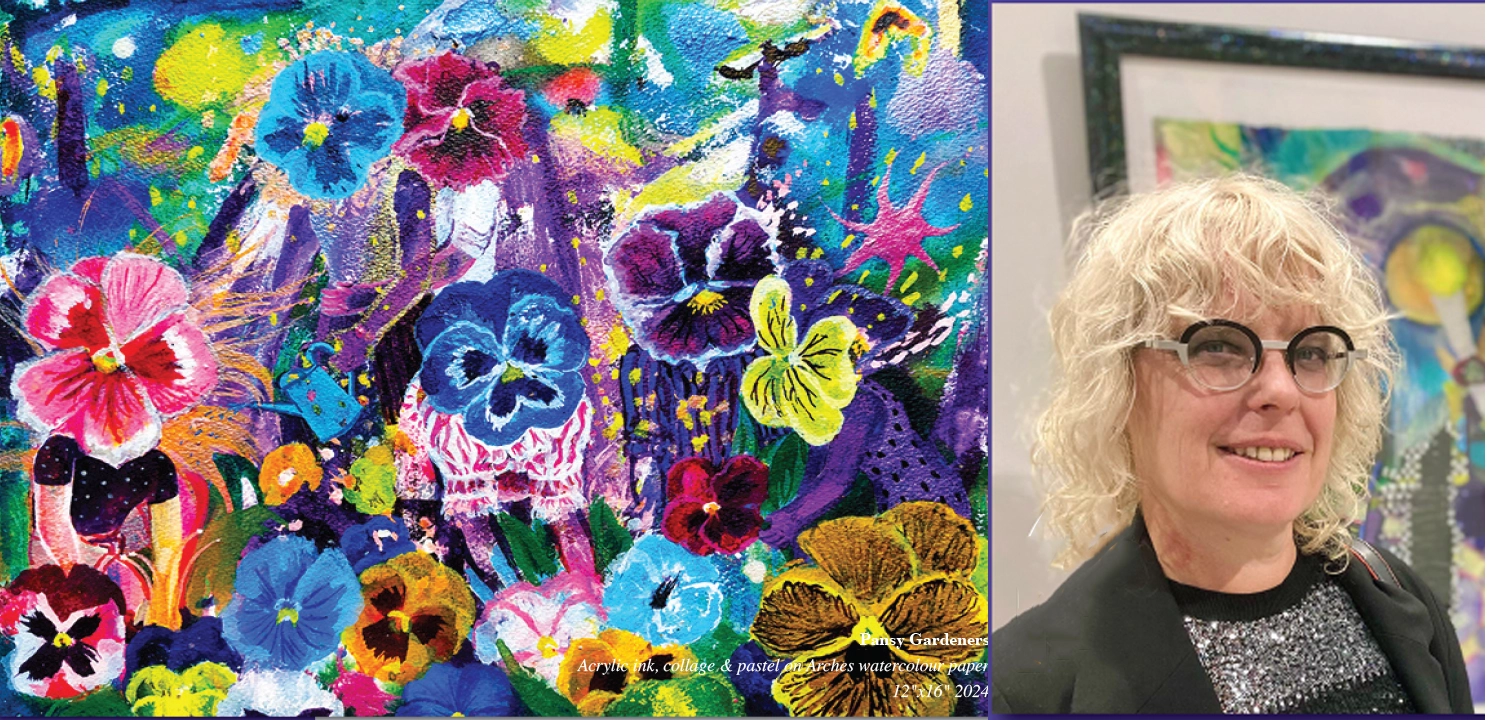
Exploring Queer Identity, Feminist Power, and Cultural Histories Through Vivid Storytelling
Niki Singleton discusses her passion for addressing societal inequities, reimagining mythological figures, and creating emotionally charged narratives that blend personal struggles with universal themes in her vibrant, thought-provoking art.
Niki Singleton is a force of artistic brilliance whose work transcends the boundaries of traditional storytelling. A Canadian painter, illustrator and sculptor with roots in Vancouver and Brooklyn, Singleton’s art is a vivid exploration of cultural histories, mythologies and the complexities of queer and feminist identities. Her creations are not merely visual experiences but immersive journeys into fantastical worlds where mythological figures, displaced peoples and forgotten narratives come alive with raw emotion and incisive commentary. Singleton’s ability to weave together vibrant colors, dynamic movement and layered symbolism results in works that are as thought-provoking as they are visually arresting. Her art challenges societal norms, celebrates the undervalued and offers a poignant reflection on the contradictions of our time; making her a vital voice in contemporary art.
In this exclusive interview for WOWwART Magazine, Singleton opens up about the deeply personal and universal themes that shape her practice. From reimagining mythological figures like Hekate as a powerful queer icon to addressing societal inequities through pieces like Adam’s Garden and Mathematical Knot, Singleton’s work is a testament to the transformative power of art. Her process, which balances emotional spontaneity with intellectual rigor, reveals a profound commitment to storytelling that resonates on both intimate and global scales. Join us as we delve into the mind of an artist whose passion and depth of vision continues to inspire and challenge audiences worldwide.
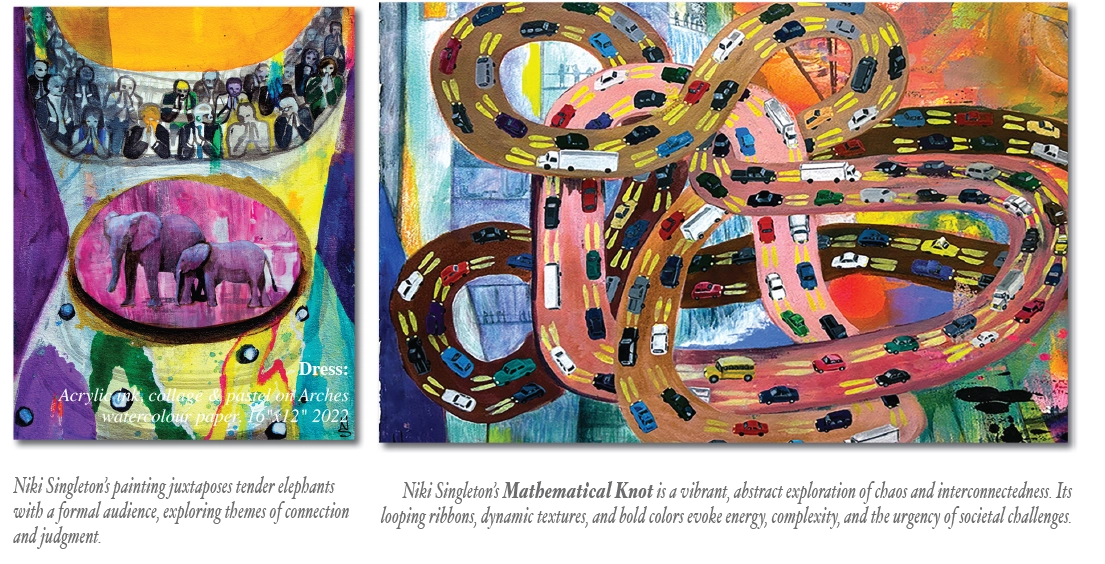
How does your passion and emotional depth shape the themes and direction of your artwork?
I’ve always been deeply passionate about social issues—whether it’s injustice, inequality or the struggles of the marginalized. My father, a left-wing Londoner and my mother, a Greek African from Tanzania, helped shape my worldview. Growing up queer in the 1980s, I faced prejudice that fueled my drive to address queer and feminist issues in my work. I’m particularly drawn to telling female stories and representing female power, either by creating new narratives or resurrecting lost ones, often inspired by Greek mythology with a contemporary slant.
In Hekate’s Cave, I reimagine the goddess Hekate as a powerful, queer figure, overwhelmed by the state of the world. As an outsider goddess in the Greek Pantheon, she controlled the sky, earth, seas and underworld. Known for her magic and sorcery, I depict her with a Mandrake, shaped like a woman, coiled around her. A Polecat—once a woman punished by Zeus for witchcraft—sits beside her, now Hekate’s familiar, symbolizing her empathy for the unjust. In a defiant golden floating stance and surrounded by night creatures, Hekate wields a dagger embodying power and compassionate defiance. To view this painting please visit the Niki Singleton website.
“Painting, for me, is an extremely emotional act.
It delves into parts of the brain we often suppress.” – Niki Singleton
You describe yourself as “battling to silence your head.” How does this internal struggle influence your creative process and final pieces?
Painting, for me, is an extremely emotional act. It delves into parts of the brain we often suppress—difficult emotions and feelings we deem inconvenient or weak. It’s like tapping into the amygdala, which processes emotion, while also navigating the prefrontal cortex, which tries to impose logic and structure. I view painting as a form of meditation, demanding presence to create marks that carry emotional weight and meaning.
As a narrative painter, I need to balance both emotional depth and reason. I begin my work abstractly and intuitively, letting the painting evolve on its own. My brain constantly fires associations that distract me so to maintain an intuitive flow, I often step back and paint over what I’ve done, constantly creating and destroying parts of the painting until it forms a coherent and compelling story and environment.
“I hope my work inspires and engages people on both an emotional and intellectual level.“– Niki Singleton
Much of your work draws from cultural histories to address current societal issues—can you share an example of a piece where this approach felt especially meaningful?
Adam’s Garden is a good example of a contemporary take on the bible story of Adam in the Garden of Eden. As a queer feminist, this story has always been problematic for me, especially the gender bias that shapes its most common interpretations. In my version, I paint Adam as non-binary, surrounded by vaginal flowers, questioning why God would create Adam as male if women hadn’t been made yet to impregnate. According to some ancient interpretations of the Bible, the first human being was androgynous—created in the image of God, both male and female. This piece challenges how patriarchal interpretations of such stories have been used to marginalize women and queer people.
How has living in Canada, along with exhibiting internationally, impacted the way you explore or represent societal and personal challenges in your work?
My experiences living and exhibiting in major cities—London, Taipei, Paris, New York—and traveling the world over the past twenty years have deeply influenced the complexity of my work. I often begin a painting by addressing personal challenges within a specific culture, which then expand into global issues. Mathematical Knot is one such piece. It explores my struggle to navigate climate change within the Vancouver cityscape. After moving to White Rock, a small town near Vancouver, I was struck by how car-dependent the area is, with limited public transportation options. The economic downturn combined with rising real estate and gas prices has made sustainable transportation, like electric cars, out of reach for many. In this piece, I imagine a future devastated by climate change where cars endlessly drive on a “skin highway” while the privileged view from behind glass towers. The work reflects the growing economic divide, making the climate crisis feel as complex and unsolvable as a “mathematical knot.”
What role do you feel publications like Hudson Art Review and Queer City Journal play in broadening the audience and conversation around your art?
These publications provide a platform for feminist and LGBTQ+ voices, helping my work resonate with these communities and a wider audience. International exposure has broadened my reach, connecting me with people worldwide. These spaces spark crucial conversations, challenge societal norms amplify marginalized voices and experiences.
As an artist concerned with the present and future, what message or feeling do you hope people walk away with after experiencing your work?
I hope my work inspires and engages people on both an emotional and intellectual level. I want viewers to feel seen and understood, recognizing that their struggles are shared by others. Ultimately, I aim to leave them feeling empowered and motivated to make positive changes in their own lives and in the world around them.
View Niki Singleton’s works at the Artsper Gallery.
EDITOR’S HIGHLIGHTS
Empowering Art & Artists Globally
“Being featured in WOWwART means gaining visibility not just in print edition, but across the entire media spectrum in the US, UK, Europe and beyond”

EDITOR’S HIGHLIGHTS
Media, Art and Artist
Media is a powerful tool to build relationships, boost visibility, influence decisions, and create lasting impressions for success and growth.
